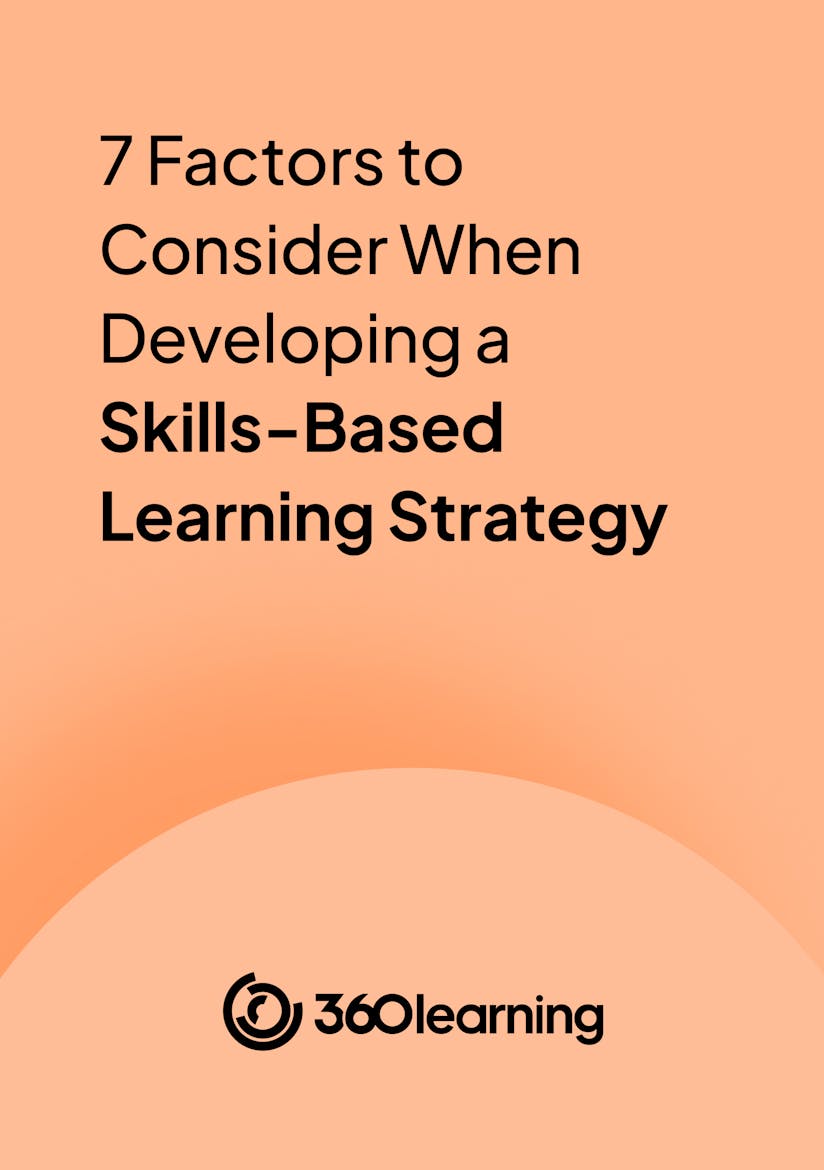
As L&D leaders, we’ve long grappled with the challenge of allocating time for upskilling and reskilling employees.
Setting out to solve the time issue, CLO LIFT (a think tank of Chief Learning Officers) found that lack of time is not the most critical factor—it all comes down to the quality of learning. Instead of focusing on time, we need to think more about the value of learning.
In this first article of a three-part series on CLO LIFT insights, with advice from members Lisa Christensen and Huw Newton-Hill, we explore how L&D practitioners can take back our agenda by defining and emphasizing the key factors that will help us make the most significant impact and level up our industry.

Guarantee a successful move to skills-based L&D
By providing your contact info, you agree to receive communications from 360Learning. You can opt-out at any time. For details, refer to our Privacy Policy.
Five factors to help CLOs create value
CLO LIFT arrived at the consensus that to start leveling up the L&D profession, you need to focus on value.
If we create valuable learning experiences, learners will make the time in their busy schedules for upskilling and reskilling. Focusing the L&D agenda on value will also help ensure that you create value for your organization.
“We came up with five factors to make this useful. These are the areas CLOs can focus on to ensure they're creating value,” says Huw Newton-Hill.
“We came up with five factors to make this useful. These are the areas CLOs can focus on to ensure they're creating value,” - Huw Newton-Hill.
1. Strategic alignment
Strategic alignment is ensuring that the whole of your L&D function is in lockstep with your business.
CLO LIFT heard from many L&D professionals that they tend to be one step behind or removed from the business discussion. We need to work to get closer to the business to inform our decisions about the talent organization's work.
“Strategic alignment is about an L&D operating model and how you function at every level of your organization to make sure you are where the strategy is being set rather than the business coming to you,” says Lisa Christensen.
“Strategic alignment is about an L&D operating model and how you function at every level of your organization to make sure you are where the strategy is being set,” - Lisa Christensen.
2. Relevance to the individual learner
Next, the L&D function needs to ensure that each employee's individual learning experience is essential to them.
Our upskilling initiatives need to empower learners to apply what they have learned in their workflow and feel more confident and satisfied in ramping up their performance. Learning relevance is also about connecting learning experiences to succession planning and rewards so employees see them aligning with their career progression.
“Relevance to the individual is understanding what they need, making sure you’re listening to them, understanding their context, and encouraging them to prioritize,” says Huw.
3. Quality of the learning experience
L&D still has a long way to go to improve the overall quality of our learning initiatives.
“Content covered is not content learned. Just because you tell me something doesn't mean I'm going to change my behavior or how I lead,” says Lisa.
“Content covered is not content learned. Just because you tell me something doesn't mean I'm going to change my behavior or how I lead,” - Lisa Christensen.
Academic research and experiments show that quality learning experiences are not click-through eLearnings or lectures. What creates meaningful instruction is rich and deliberate practice opportunities where employees are encouraged to try new things and behave in new ways.
4. Long-term continuity
Learning can’t be a one-off experience. Companies need to foster a learning culture that persists throughout the entire organization.
“We know that learning behavior change takes time, and we need to build skills and behaviors over time,” says Huw.
“We know that learning behavior change takes time, and we need to build skills and behaviors over time,” - Huw Newton-Hill.
In today’s challenging economic conditions, organizations must foster a continuous learning culture and create long-term learning paths to develop employees. The best approach is to ensure that you explore what learners say is most important to them to help them build new skills and plan their career trajectories.
5. Breadth of opportunity
L&D teams need to ensure they are giving everyone within their organization the opportunity to develop and grow.
Our profession needs to be committed to creating democratized access to learning experiences and removing the guardrails and structural barriers that keep some employees out of learning or trying to meet the scale needs of frontline workers.
“Our obligation as L&D professionals is to create democratized access that will help people move through the disruption we are projecting and have career opportunities that benefit them and their organizations,” says Lisa.
We’ve discussed how to create value in organizational learning, but how can we move away from the long-standing order-taking paradigm? Read on to find out.
Three principles to help cast off the order-taking paradigm
Huw and Lisa have three principles to help you pivot from the order-taking paradigm toward a performance approach.
“These three principles come under the overarching umbrella of any good action today is better than perfect action a month from now,” says Lisa.
1. Get involved in business strategy: Think about how you can be more deeply invested and knowledgeable about the problems your organization is trying to solve.
2. Start with experimentation: Brainstorm how to conduct small experiments to help you build credible wins.
3. Consider metrics other than time: Figure out how to create markers that are not about activity in learning but about the impact against business problems.
Explore further insights on rethinking measuring impact on the latest episode on The L&D Podcast: From ‘Time’ to ‘Value’: Reframing the Impact of Organizational Learning
Want more peer insights on transforming workplace learning? Sign up to become a member of the L&D Collective. Or you can subscribe below to our weekly newsletter to receive our latest posts directly in your inbox.




